|
When dealing with autism, just as in most other disorders, you will be faced with a number of therapy options for your child. These include therapies that are educational, behavioral, biomedical, nutritional, and sensory.
This post may contain affiliate links. Purchases made through these links help make content like this possible, at no charge to you. We thank you for your support. One way to ensure that your child receives the best possible therapy for autism is to carefully monitor the effects a therapy has over time. By finding out which therapies work and which do not, you can stop paying for the ineffective methods and put more of your money into those which are creating a positive difference. First, evaluate the abilities of the autistic individual before the therapy begins. To do this, many services and organizations, including the Autism Research Institute, provide a checklist of evaluation points that focus on behavior and illnesses associated with autism. Autistic individuals tend to have increasing functionality as they mature, so remember that some of the positive effects in his or her life are simply due to the natural growth process. However, after two months fill out the checklist once again and compare it to the first. Are there any sharp positive increases in behavior characteristics? If so, this is more likely due to the treatment. It is important to begin only one treatment method at a time. If you try everything at once instead, good and bad effects may cancel one another out, or even if the effect is totally positive, you will not know which treatment method is causing it and which are not doing anything. Of course, past studies can help you choose which methods to use, but because autism is an extremely complicated and individual disorder, these studies are not always helpful. Also, some treatments are so new that the studies done are only on short-term effects, which is usually unhelpful. Instead, it is a process of trial and error. Two months is a good amount of time to study the differences within an autistic individual trying a new treatment. After two months, if you do not see positive improvement, you can discontinue your use of that particular method and better invest your money in treatment options that work. Remember that you do not always have to wait two months to make choices about whether to continue or discontinue a therapy method. If the side effects of a medication, for example, are interfering with the patient’s life in an unbearable way, then you should discontinue the treatment. You can also make continual treatments based on immediate good reactions—just remember to continually monitor the various methods. Autistic individuals grow and mature just like everyone else, so treatments may stop working after time. Before trying anything new, consult your doctor to make sure you are being as safe and healthy as possible. Autistic children need schedules Schedules are an important part of every child's life. This is especially true when dealing with a child of special needs like Autism. Having a schedule will help the Autistic child feel a sense of structure. Children with Autism often have anxiety issues they are dealing with. Having a schedule helps the levels of anxiety to drop. They know what to expect daily. They know at a certain time of the day what they will be doing. If there is no schedule or structure in an Autistic child's daily life things will be very hectic. An Autistic child can have a lot of medical and therapist appointments. Sometimes there will be more than one appointment a day. Keeping a schedule can help you and your child to make sure they do not miss any appointments. Some Autistic children have trouble with reading. You can use a visual schedule. Have pictures for all the daily activities. This allows them to see what is coming next. Having a schedule for your Autistic child will help avoid some breakdowns. Keep the schedule posted where your child can see it. If you have to change the schedule explain the changes to your child. Autistic children like routines, and a change could throw their whole day out of whack. Homeschooling One Child has a visual schedule available for subscribers. To get yours, simply subscribe to the newsletter here. Schedules can be a help when trying to get the child to do something they do not want to do. Simply show them that after they do the task or activity they will get to move onto something else. Tell them they cannot move on until this activity is completed. It’s difficult to argue with a printed schedule. There will always be things that come up. Try to stick to the schedule as much as possible. When things come up try to get back on schedule as soon as you can. This includes weekends. If your child is used to getting up at seven in the morning continue to do so. Keep their bedtimes close to the same time each night. Your Autistic child will be happier when they have had enough sleep. Schedules will make life much easier for you and your Autistic child. Keep them posted for your child to see and stick to the schedule the best you can. An example of a schedule you can use is found below. 7 AM Wake up, get dressed, and ready for the day 8 AM Breakfast 9 AM Therapy Appointment at home or homeschool 11 AM Free time/ Play time 12 PM Lunch 1 PM Outdoor Play 2 PM Therapy Appointment at home or homeschool 3 PM Free Time 5 PM Dinner 6 PM TV time 7 PM Bath time 8 PM Bedtime This allows the child to know what is going on during the day. Include medical or therapy appointments on the schedule. An older child can still benefit from a schedule. It has to be adjusted for school time, and any extracurricular activities. You can include homework time and chores into the chart. Once you start using a chart for your Autistic child you will see an improvement in the flow of your day. This also leaves little time for boredom. There is always something planned to do. Let your autistic child be a kid Many parents with autistic children are afraid to let their child be a kid. They get so wrapped up in their child's therapies they forget to let them have fun. They focus on keeping them safe and become too protective. The child's life becomes full of appointments. They get little time to just be a kid. While it is important to keep your child safe it is also important to give them time to do things they like. Here are some things you can do to make sure your child gets to be a kid. 1. Give your Autistic child a certain time each day to do whatever they want to. If they have a toy or game they like to play let them. Everyone needs a break from appointments. 2. Arrange activities for your child that they like. This could be something like a trip to the park once a week, or a meal at their favorite restaurant. Let the child pick the activity. Maybe they would like some time to spend with grandparents or a favorite family member. 3. Let them retreat into their autistic bubble—but don’t let them stay there. If they need a sensory break and want to watch a train video or play with trains, or be on a tablet, or swing from a sensory swing, let them do that. These activities are not wastes of time, but instead they help the child process and decompress. 4. Do not teach your child to be a victim. Just because they are Autistic does not mean they cannot have a normal life. They need to be taught to not let their condition stop them in life. Teach your Autistic child they can do anything they set out to do. 5. Do not let your child's diagnosis of Autism become an excuse. Give your child consequences if they do something wrong. Do not let them get away with things simply because they are Autistic. Children learn pretty quick that the excuse of their condition can get them special treatment. This will not help them later on in life. 6. Give your Autistic child chores. Make sure they are chores the child is capable of doing. This will give the child the pride of knowing they can accomplish something. Give them rewards for completing the chores. The chores could be as simple as making their bed, picking up their toys, or feeding pets. 7. Do not lower your expectations for your Autistic child. Teach them to always do their best. Having a medical condition should not give them a reason to not try. If they do not try they will never know their full potential. Kids get hurt. They get dirty. That is all a part of being a kid. Do your part and watch over them but allow them to have some freedom. Even though your child has special needs, allow them the chance to be a child. Homeschooling autistic children There’s an old adage regarding autistic people: if you’ve seen one person with autism, you’ve seen one person with autism. This means that autism is a wide-ranging developmental disorder that manifests in many, many different ways. You have to do what is right for your family and your child, regardless of what works or doesn’t work in other autistic homes. There are many resources and activities for children with autism for homeschooling. Some parents, especially those who have had children in public schools, are familiar with individualized educational plans, or IEPs. As a mom of four special needs kiddos, three of whom were in public school and the last daughter was in public school for 2-1/2 years, I can say with all confidence homeschooling is the best IEP you can possibly give your child. You know your child more than anyone, and you are fully capable of teaching your son or daughter, even if autism is present. Absolutely, count therapies as homeschooling. Kids work hard in therapy, and they learn a great deal--why shouldn't that count as homeschool? In fact, if all your child does in a day is therapy, that's a homeschool win. Read to your child, no matter the age, every day. Talk with your child, even if he or she is nonverbal. Just because the child cannot speak does not mean the child isn't listening to you. (Be mindful of what you say; if you're talking about the child with the child in the room, don't be negative and say the child cannot do something. What a child hears, they become). Be patient when teaching. Make abstract concepts as concrete as you can. Use manipulatives in math. If they act out or have some sort of behavioral meltdown during a subject that you've gone over again and again, it might just be that they're bored. My autistic son did menu math in school for years until I homeschooled him the last semester of his senior year, due to bullying and behavioral issues. Turns out, he was bored with menu math. After I acquired a pre-algebra book and started teaching him that, his behavior issues cleared up. He found pre-algebra to be intriguing, like codes to solve. He had been bored the whole time and was acting out because of it. Other resources for kids with autism As I wrote above, I'm a mom of an adult son with autism who was diagnosed in 2000 at the age of six, when there wasn’t a lot of research, acceptance, or tolerance for people with autism. I had to do a lot of trial-and-error on my own to help him. There are a couple of tools and resources I used throughout his childhood and teenage years to help him. One was the website Do to Learn. This website has an incredible treasure trove of resources, information, and tools to help parents with their kids. Another resource, especially in Sam’s teenage years, is the book by Mary Wrobel, Taking Care of Myself. This book (the edition with the green cover is the best) helps teach teens with autism about hygiene and puberty. It can be used as a personal curriculum for young people with autism. Lastly, it helped me a great deal as a mom with an autistic child to learn from others who had experience managing life while having a child with autism. Parents with typically developing children simply don’t understand the grief, joy, heartache, and extreme fatigue that comes with having a child on the autistic spectrum. Having been through that road before, I wanted to do something to help others who are homeschooling kids with special needs. That is why I created the Homeschooling Special Needs Expo, coming to Shelby, NC, June 28-29, 2024. This Expo delivers over 50 educational sessions from over 30 seasoned, experienced homeschoolers and people who have or are facing parenting children with various challenges. It also features almost 30 exhibitors that focus on curriculum, special needs, therapies, testing, and other services or products to help you in your homeschooling special needs journey. For more information, and to register, click here. Blessings, Terrie © 2024 Terrie Bentley McKee ALL RIGHTS RESERVED
0 Comments
Some say homeschooling is only for the younger kids in the elementary or middle school, but high school homeschooling is also a very popular educational choice. Only this time, the decisions lie in great part with the students themselves.
This post may contain affiliate links, which help support this website. We thank you for your consideration and your support. Most that homeschool in high school are teenagers who cannot take the pressures at school, especially those of peer pressure and bullying. Others cannot catch up with the lessons and curriculum programs of regular schools or would like to start early in life through training, internship and community volunteering jobs that would help them be knowledgeable and prepared for the struggle outside the four walls of their school. Still others have been homeschooled their whole lives; why stop now? Choosing the suitable curriculum for teenagers for high school is very important. There are a lot of materials or support they can get especially on the Internet. They can talk to other homeschoolers in established groups through message boards, forums and chats to build a network. Homeschooling sites are also all over the net; they can browse through these sites, find an established support group in their area, get some catalogs and enroll in a curriculum or they can create their own study program. Co-ops are equally as important. This is good for those students who have very supportive and open-minded parents. But in case there are none and the student is left to carry out his curriculum by himself, homeschooling helps students to stand up and depend on themselves because one thing that is developed within is good independent study skills and more as they engage in continuous studying on their own. In choosing the homeschool curricula, it is best if teenagers are present and take an active part in deciding which curricula to choose that would best apply to their learning styles and abilities. It's good for teenagers to create their own course of study. In this way, students will have good choices of activities which develop every aspect of their personality instead of just choosing a fixed program. There are different approaches to choose from and combine that would help in the holistic development of the student. For high school, homeschooling can help them start in life and make a step forward through practical trainings and internship programs depending on the specialization they like to pursue. They can actually be successful in what they want and might do best in the future. For more information on homeschooling in high school, please visit these sites below: Electives to Teach Why You MUST Teach Entrepreneurship in High School Teach Your Teens to File Their Taxes Life Skills to Teach Your Teen: Event Planning 101 Student Blogs: Why Your Teen Should have Their Own Blog Homeschool High School Speech and Debate - 4 Frugal Resources Preparing for College Preparing Your Homeschooled Teen for College Transcripts Assigning Grades for Homeschool High School Transcripts Assigning High School Credit and Planning High School at Home Summer Plans 101 Things for Teens to do in Summer Balance Balancing Academics and Fun in Homeschool High School Thinking about After High School Steps to Choosing the Right Degree After High School Life After High School: Navigating Your Next Steps After High School General / Planning High School Homeschooling High School--Relax, You CAN Do It! Homeschooling High School/5 Tips to Get Ready for the New Year/Special Needs High School High School Archives by Year Round Homeschooling An Authoritative Guide on How to Homeschool High School Should I Homeschool My High Schooler? Curriculum Our Frugal High School Curriculum Choices Homeschool High School English - Make Your Course YOUR Own Affiliate Resources 7 Sisters Homeschool (many, many high school curriculum resources) Hundreds of high school courses at Schoolhouse Teachers In the spring and summer, homeschooling content creators call this "convention season" and it's for good reason. There are so many homeschool conventions, conferences, expos, and days scheduled all over the country during the spring and summer that it warrants its own season.
This post may have affiliate links to homeschool conventions that help fund this website (and give you a good deal, as a coupon is included). We appreciate your support. What does this mean for you, a homeschooler? It means that if you have any question about homeschooling, there will be someone at a homeschool convention that can answer that for you. If you're thinking about changing curriculum, you can browse, look through curriculums--even talk to the curriculum creator in a lot of instances. Here are nine reasons why homeschooling families should attend homeschool conventions: 1. Speakers The first reason is the large variety of homeschooling speakers who pour out their expertise in sessions that are designed to help you and your children. There are keynote speakers that have been homeschooling for years (sometimes decades) and are fighting for you and your children on the national level. They have more encouraging knowledge in their little fingers that most have in their whole hand. Last year's Teach Them Diligently in Pigeon Forge saw Kirk Cameron on stage, then Heidi St. John, and other powerhouse proponents of homeschooling. In smaller sessions you have homeschool content creators, curriculum writers, bloggers, and other homeschoolers who know what they're talking about, and give you that knowledge--and are often free right after the session for a few minutes or available in their booths to talk one-on-one with you. I know that after my session on special needs children last year at Teach Them Diligently-Pigeon Forge, I had a number of parents come to my booth to ask me specific questions about autism, ADHD, and other learning difficulties. They walked away with not only helpful information but also my card for further assistance. Many speakers are like that--or have resources that will help you in your homeschooling journey. Tip: Bring a notebook to write notes, ideas as they come to you in sessions, questions to ask, booths to visit, etc. When you meet another homeschooling family and your families click, use your notebook to write their contact information down. 3. Phenomenal Sessions Every homeschool convention company works tirelessly to bring in speakers who know what they're doing, and have something to say about it, and because of that, participants enjoy phenomenal sessions about a wide range of topics--from Homeschooling 101 to homeschooling special needs kids, to discussing government interference, and everything in between. You literally can gain a wealth of knowledge about homeschooling, and so can your kids. There are many sessions that relate to teenagers, such as choosing a college, or developing your high school transcript (your teens should go to these!). Every convention is different and offers a different slate of topics from which to choose. 3. Exhibit Hall Here's where it gets fun -- and sometimes, overwhelming. There are so many booths exhibiting curriculum, curriculum helps, books, toys, opportunities--that it can get to be a bit much. Take your time, go through each aisle, making note of booths you want to come back and visit later (preferably, by yourself, while your husband or wife watches the kids out in the reception area). I encourage you, if you and your spouse go to homeschool conventions together with the children, to give each spouse an opportunity to wander the exhibit hall alone. Last year, while I worked my booth at Teach Them Diligently-Pigeon Forge, my husband wandered the hall. He came back with a newfound love of homeschooling (yay!) and a lot of resources for our homeschooling daughter. Also, go through the aisles with the children, too. They may see something that encourages them. Plus, it's great to see other homeschooling children and know they're not alone. TIP: Wear very comfortable shoes. Leave the cute heels and flip-flops at home or hotel, and wear your sneakers. You will walk more than you think you will. 4. Children's Programs Many homeschooling conventions will offer childrens' programs for little ones, elementary age, even middle school. When your kids get to be in high school, they can offer volunteer at these childrens' events (especially for Teach Them Diligently events). At some conventions, homeschooling high school graduations are held. Don't be afraid to let your kids be a part of the childrens' programs -- it gives them something to do, new friends to make, and gives you the opportunity to go to the sessions and exhibit hall in peace. Tip: If allergies are a concern, simply pack your child's lunch and snacks, and make sure the staff knows about them. If your child has special needs, make sure the staff knows that, too. 5. Meeting Other Homeschoolers Meeting other homeschooling families is a huge plus when attending homeschooling conventions. You realize you're not alone, and you can bounce ideas off one another. It's a great time of fellowship and meeting new friends. 6. Meeting Homeschooling Content Creators Where else but a homeschooling convention can you actually meet Linda Lacour Hobar, the author of The Mystery of History, and talk with her one-on-one about history and what you liked about the curriculum? You can meet the very people that create your Bible devotions at the Not Consumed booth! You can meet me! I'd love to meet you and show you all the new things that are in my booth this year (you can preview them here). TIP: Homeschooling creators work long hours to create and curate the things you see in their booths. The booths are not cheap, and they're certainly not free. Please do homeschooling content creators a solid and bring either cash or credit cards (most accept both or either) and buy something. It's a kindness--and keeps us going. 7. Buying Next Year's Curriculum Often, you can find incredible deals on your favorite, or a new-to-you curriculum at conventions. Come armed with the credit card and go ahead and purchase it, taking advantage of any sales thay may be going on. Often (but not always), homeschool curriculum creators can ship the materials to your home so you're not lugging around 72 pounds of books throughout the exhibit hall. TIP: Sometimes you'll buy a book and it'll weigh a good bit. Some conventions give swag bags but they're not hefty enough to carry a bunch of books. Bring a hefty totebag, an extra stroller, or something to carry your loot. Last year a family brought a wagon -- had their kids on each end and their haul in the middle. It was fantastic! 8. Traveling [according to my daughter who was scientifically polled for this article (meaning she walked in while I was writing and I asked her what the biggest benefit to going to homeschool conventions was to her)], is a side benefit of going to homeschool conventions. When you travel to a distant place for a convention, make it a fun time. Pigeon Forge (where Teach Them Diligently will be at this year) offers a huge amount of things to do besides going to the convention. Where else can you visit a Titanic exhibit, see a building with King Kong on it, and visit an upside-down house? We've stopped at educational and fun places on the way to a convention in Texas -- it breaks up the trip and adds a fun element to homeschool conventions (and makes that more educational). 9. Rededicating Your Family to the Homeschool Ideal One of the most important aspects of going to a homeschool convention is the energy and confirmation of the "why" we homeschool. If you're teetering on the brink of giving up--by all means, go to a homeschool convention. Between the speakers, the keynotes, the sessions, meeting other homeschoolers, and exploring the booths in the exhibit halls, you will gain a new perspective on homeschooling and maybe recommit to it. It's important, especially in the culture in which we live as Christians, to see the importance of homeschooling. Attending homeschooling conventions can do that. TIP: The food in convention venues is often pretty expensive. If you can (according to venue policies), pack your family's lunch. If you can't (because of policies), find a hotel near by in which to stay, and leave for an hour for lunch in your hotel, and come back. Or, keep the cooler in your car and go out to your car for lunch. Here's another tip: after a long day of conventioning, most of the time you just want to go back to the hotel. Bring a slow cooker with you from home, start it in the morning, and by the late afternoon and evening, dinner is ready for you when you get back to the hotel. Throw the kids in the pool, then shower everyone--it'll be an easy bedtime for everyone, just to get up the next day and either convention some more, or get on the road back home. Happy Homeschooling! ~ Terrie (C) 2023 Terrie Bentley McKee ALL RIGHTS RESERVED
I am in a number of social media homeschool groups, and one question I see over and over from new homeschoolers is this: what is the best curriculum to use for my child? Here's the quick answer: there isn't any, and they all are. Here's the long answer: The best curriculum is one that you choose for your child, based on your child's developmental needs and abilities. With that being said, let's explore how to choose the best homeschool curriculum.
This post may contain affiliate links. As an Amazon affiliate, I earn a small commission from purchases made using these links. In addition, all curriculum suggestions are personally vetted by me and my daughter. Encourages Learning This may be a "duh" point but you want your curriculum to not be boring. If you get bored reading it (and I encourage you to read a couple pages, and skim through an entire book before purchasing any textbook), then your child will be bored--and you don't want that. You want the curriculum you choose to encourage your child to want to learn about the subject matter, whether that's math or history. Children have an innate curiosity about them, and the curriculum you choose should present insightful text, questions that make your child think, and the potential for additional projects, papers, or problems to solve. Any curriculum you choose for any subject should spur in your child a love for learning. The Charlotte Mason homeschool method utilizes the addition of living books, which are engaging books that bring the subject alive. Any time you supplement any curriculum you purchase using living books, you add a deeper level of understanding into the subject matter. SUGGESTIONS: I really like the history curriculum from Notgrass History, due to the amount of possible projects and other assignments. I also really like Rabbit Trails Homeschool's history curriculum, because it's literature based using living books (take 10% off with our coupon code H1C). Rabbit Trails' science curriculum is top-notch, as well. For Bible studies, I love Not Consumed's studies, which combine biblical truth with practical teachings (I also love their student planner!). Everyday Graces Homeschool has beautiful Charlotte Mason-inspired studies. Teachability Not only should the curriculum encourage a love of learning for your child, but it should also be fun to teach. When you learn as the teacher along with your child, you're more invested into the curriculum and in your homeschool. If the curriculum is too hard to teach, you're not going to enjoy it. I have used curriculum that had great information, decent workbooks, but were tedious to teach. On the other hand, I've used old-school textbooks that had the text in smaller chunks with questions to reinforce retention. If you use textbooks that have a large amount of text, I suggest you break it up into chunks for your child, and if the workbook doesn't have questions for retention for that section, make up your own questions. I've done this many times. Realistically, you are the teacher. so you can create questions, you can download worksheets, whatever you want to do. There are many resources that you can use to supplement your curriculum and help in teaching, such as the following:
SUGGESTIONS: Schoolhouse Teachers makes it easy to teach due to the scopes and sequences are laid out for each course. Many courses are taught via video, and others lay out the courses for you. Plus, if you join as a Silver member, you gain many benefits, such as the AppleCore program. This online program gives you the ability to track attendance, grades, report cards, and transcripts. I have also used old school textbooks that I purchased at a significant savings from Ebay.. Ownership Before the start of a new school year, before we buy curriculum, my husband and I always ask our daughter what she wants to learn in history and science. This ability to choose provides a sense of ownership and buy-in with your child. If your child wants to have a say in his or her education, by all means, let your child have that freedom, but within reason. Often, especially for science, all it takes for buy-in is to involve your child in science labs. A good source for labs (and homeschool curriculum) is Home Science Tools. For both science and history, field trips are often incredible ways to make the subjects come alive for your child. Allow your student have some say in field trips, but always follow up with the field trips by asking what your child learned or have them complete this field trip report. Developmental Needs and Abilities In choosing your homeschool curriculum, one thing you must do is take into account your child's developmental needs and abilities. You can use the math placement tests from Teaching Textbooks to discover what exact level your child is on, and adjust accordingly. Sonlight also has placement tests, not only for math but for reading and language arts, as well. If your child has special needs, you will want to teach him or her based on their developmental level -- not based on age or technical grade. You can teach subjects on different levels, for example, if your child is 12 years old and technically in the seventh grade, but because of her ADHD or his autism is developmentally in the fourth grade in language arts and tenth grade in math, teach the child on the developmental level. If your child is in the ninth grade by his age but developmentally in the third grade, teach him in the third grade. In this case, I would also strongly consider adding life skills to his curriculum and not force the academics too much. Meet his needs where they're at, but don't frustrate him--or yourself. Catalogs While you're on Sonlight's website, go ahead and order their catalog. Do an Internet search for "homeschool curriculum provider" and order all the catalogs you can. Using these, you can get an idea of scope and sequence, what they offer, what you can offer in your homeschool, and what electives exist. Apologia has free homeschool resources on their resources page, such as a homeschool curriculum planning guide, podcasts, and videos to help you in the homeschooling journey. Homeschooling is a very individual thing, and you can't have a one-size fits all approach to it. What works for my homeschool (and therefore is my "best" homeschool curriculum) may not be a good fit for your homeschool, and therefore would not be your "best homeschool curriculum." The best thing to do is to examine first why you're homeschooling, what your goals are as a homeschool and for each individual child, and choose curriculum based on your family's lifestyle and goals. For my family, we travel a good bit for my husband's wheelchair basketball team (you can see why he's in a wheelchair in this book) so we do a good bit of roadschooling, or homeschool on the road, so an online curriculum wouldn't work for us.. You may have a very strict homeschool budget, and need to find online resources that would be easy to teach, encompass all the subjects, yet be affordable (you can totally do that, too!) and can't buy a total big-box curriculum. There's nothing wrong with buying workbooks that you find at discount stores or at teacher supply shops and using those. Be sure to read my blog post on homeschooling on a budget! No matter the homeschool curriculum you choose, remember than you are homeschooling-- the emphasis should be on the relationships you have with your children and building them up while learning. Learning doesn't just happen with books; it happens while you're cooking or cleaning the house, while your husband engages with your child and teaches her how to change the oil in the car, or how to make doctor appointments. It's about doing life together. All my best, Terrie (C) 2022 Terrie Bentley McKee ALL RIGHTS RESERVED There are a myriad of different reasons why people choose to homeschool their children: there is the economic benefit of avoiding high private school fees; there is the convenience of scheduling schooling around other family activities; if a child has special needs that aren't being met in public school; or you don't agree with public schools' curriculum choices.
One of the most important benefits of homeschooling is the flexibility with which you can tailor your child’s education. It is a well known fact that every individual has individual needs, and homeschooling allows you to create a learning environment that suits your child particularly. When you involve your child in that process, you create buy-in and ownership of your homeschool within your child. When you undergo homeschooling, it is important that you have a clear curriculum, mindset, and a plan to execute it. But within that plan, you should understand that you have a tremendous amount of flexibility: there are many different ways that a child can learn something, and many different things to learn in a given subject. One of the best ways that you can ensure a high level of learning retention is to encourage your child to take a personal interest in his or her education. Although this may seem obvious, many people growing up who went though a traditional school system will probably agree that their education was received in an authoritative way: schooling and your education was something that was done to you, not with you. When homeschooling, however, you can take advantage of the almost unlimited flexibility at your disposal and let your child take a more active role. While you can’t, obviously, let your child do whatever he or she wants education-wise, you should always explain to him or her a given education plan, and see what he thinks. Each year in the spring, my husband and I ask our daughter what she would like to learn about in history and science the next school year. While she doesn't have the flexibility to choose what she learns in math or language arts, she enjoys choosing what she learns in history and science, and therefore has more buy-in. For example, when you start your school day, outline the plan for the day with your child. Depending on his or her age you can also explain the reasoning behind the plan. If there are any things the child seems averse to doing, try and take them seriously. You should not, of course, avoid certain subjects or activities simply because your child doesn’t like them. You should, however, ask your child why he or she doesn’t like something in the day’s plan, and to suggest alternatives. In many cases you will be pleasantly surprised by what your child comes up with, and be able to incorporate it into the day’s work. As much as possible, you should have a list of alternatives in mind for assigned activities. The idea is to try and think of alternative activities that accomplish the same task. If your child protests against a certain exercise, then, you can offer them an alternative. This can be extremely effective in getting your children to learn material that they dislike. Oftentimes the child simply has to feel that he or she is more in control of the situation to enjoy it. Even though you are ultimately controlling your child’s education, by granting them small allowances and choices, while still sticking with the larger picture, everybody wins: your child feels he is doing what he wants to do, and you are still teaching your child what you want him to learn. The moment a child is born, parents start homeschooling. A child learns from the very moment of birth, and what the parents do impact the child on every level. "Formal" homeschooling, in which a parent makes the intentional decision to not send a child off to a public or private institute of learning, can begin at any time, and often parents consider homeschooling during the preschool age, or between two and five years old.
Homeschooling children ages two to five, or even six, can be wonderful in that you as the parent get to instill the love of learning in your child, and you are the one to see the first light-bulb moments of understanding. I know when I first saw my own child understand that C-A-T made the word that represented our kittens Henry and Rosie, that was a glorious moment. But, homeschool at this stage (between two and five years old) shouldn't be formal, as in, workbooks and tests and heavy curriculum. Here are six tips you can do to homeschool your preschooler and kindergartener: Read, read, read The very best thing you can do as a parent is to read to your child. Starting as a baby, building those building-blocks of words, sounds, and language is crucial to a child's development. A preschooler and kindergartener finally begin to understand that the words on the page correlate to the sounds coming out of their parent's mouth. Ask questions about what you're reading; even though your child is not reading, they are listening, and you can work on comprehension through the active reading of passages. Not sure what books to read? For babies and toddlers (especially those who are apt to tear things), board books are just fine. As children age, move on to larger picture books (but skip the chapter books for now -- they need the visual stimulation of pictures). Don't have the money for books? Visit the public library, or ask for books for the child's birthday and Christmas presents. Visit thrift stores, public library book sales, or yard sales to find books. Even when the child ages through elementary and middle school, continue reading--it's a wonderful bond-building activity. Intentional Play All those toys you have for your child? Get a few out and get on the floor with your child, and play with him. Make race cars zoom around the rug, or make animal sounds from figures, or play with dolls. Interact with your child, saying things like, "What sound does the elephant make?" or "What makes the car go?" Ask your child what dress the doll should wear today. Be imaginative with your child and ask questions--see what answers you'll get. Go outside and blow bubbles and play tag. At this age, children learn by playing. Get age-appropriate board games and play with your child. Children learn turns-taking, sharing, colors, counting, and many more important developmental steps through playing. Now, one may ask, "How am I to get on the floor and play when I have a baby to take care of, too?" Put the baby on a blanket beside you, on the floor. Put a couple diapers and wipes nearby, for easy changing access, and play. The point is to be intentional about playing: ask questions, ask your child's thoughts on what a toy should do next, and point out things like the color of a truck or what sound a toy makes. Introducing Letters and Numbers For children who show an interest in letters and numbers, buy some alphabet and number magnets for the refrigerator. Don't just stick them on and expect your child to learn them by osmosis. Show them the letters, in order, and be intentional with it. Sing the ABC song--in fact, buy a kid's CD and keep it in the car, to put in and sing while you're driving down the road. I used several different types of books to read to my children growing up that were fun ways to introduce letters, including Chicka Chicka Boom Boom, Chicka Chicka ABC, and Dr. Suess's ABC. These are classic books that are fun to read over and over, and use to interact with your children. If your child is not interested in learning about letters and numbers, continue reading to him. Eventually, it will come. Children learn at their own rate and level, and a cookie-cutter approach will not work on children. All children learn at their own levels and rates, and forcing it only embitters them and makes them hate learning. Be patient! Explore Allow your child to explore his or her own world. As much as you play intentionally with your child, allow your child to have the freedom to play on his or her own. Put out paper and crayons on a kid-sized table and see what your child draws. If he draws a sun purple, don't correct him--there will be plenty of time for correction later. Allow your child to explore and learn, and this is often hard. Often, the lessons that stick the most are the ones learned the hard way: if a toy is dropped and broken, or if a finger is pinched in a cabinet door, or if the kitty scratches or hisses because his tail is pulled. Often, a child will learn through natural consequences. Talk Talk with your child. If you're changing a soiled pair of underwear for a child who is learning to use the potty, take the child by the hand and dump the poop off the underwear and into the toilet, telling her, "that's where the poop goes! Into the potty!" Talk with your child. Explain that we wear rain jackets when it's raining, or we put up our toys at certain times of the day. Announce that it's snack or meal time. In effect, narrate your child's life for him or her. "It's morning! Sun is shining, time to wake up!" "Time to change our clothes! Your head goes through this hole, your arm in that sleeve," etc. Narrate what you're serving for breakfast. If a child has a learning disorder, such as autism or sensory development disorder, although the child may have a difficult time responding back, continue to talk/narrate. Continue to read and play. It's important to do so, even -- especially -- if a child has a developmental delay or disorder. Writing As for writing, you want to wait until the child can feed him- or herself with a spoon or fork and demonstrate decent fine motor skills. Then, introduce a big pencil that is used for preschoolers and kindergarteners, and let the scribbling commence! Pour flour onto a cookie sheet, and show how to write letters in it. Buy a dry erase board, as little or as big as you want, and allow your child to write letters on it. Don't try to force the learning, as it will happen. The older the child becomes, increase the structure and discipline of writing appropriately. Use the alphabet books mentioned above and trace each letter as you read them, and have your child mimic you. Remember, each child learns differently and on his or her own time schedule. No child exits the womb quoting Shakespeare or knowing her ABCs. Read to your child, allow play (both with you and on his own), and encourage listening skills by explaining everything that's happening. Most of all, pray -- over your child, with your child, and by your child. In Christ, Terrie (C) 2022 Terrie Bentley McKee ALL RIGHTS RESERVED "Socialization" is one of the most common fears for any family contemplating homeschooling their child. This is the wrong word and concept, though. Dogs and cats are socialized. Humans are taught how to interact with others, ideally, their peers of the same age and socioeconomic background, and others who are not like them. Homeschooling can seem like isolating your child, but it really doesn’t have to end up like that. In fact, because of the nature of homeschool groups and activities, homeschoolers often successfully interact with a wide variety of people. Children can still develop their "socialization" skills in many other ways if they don’t go to public or private schools. Kids tend to learn their best socialization skills from activities they do with their own families, not from following the in-crowd at school. In fact, when my daughter was in public school for 2-1/2 years, we constantly heard that she spent too much time socializing. When I'd visit her school at lunchtime, kids were often told where to sit, when to talk, and quite often, her class had lost the privilege of socializing. When homeschooling, don't get caught up in the lie that your homeschooler won't be "socialized." If anything, that's a good thing. For my daughter, I want her to grow up to know how to interact with a wide variety of people. Here are five ways to do just that. Family Activities A good place to start is to plan a lot of activities that the whole family can do together. Playing board games as a family teaches teamwork, patience, taking turns, and how to be a sore loser (or a humble winner). Doing outside activities as a family encourages family dynamics and working together toward an end goal. Those are good things to teach; after all, you are rearing a man or woman, not raising a child. Your child won't be little forever and he or she needs to know how to work with people. Field Trips and Parks Field trips to sightseeing areas or just spending time at the local parks can allow them to interact with other kids for brief periods of time while you monitor their activities. When my daughter and I go to the park, she often organizes the other kids there in games of tag or hide-and-seek. Field trips are not just educational academically, but they also offer opportunities to interact with adults and children of all ages. Encourage your child to take the lead on talking with the ticket clerk or the gift shop attendant. Neighborhood They can also develop their peer-to-peer social skills by mingling with other kids that live in your neighborhood. They can develop friendships with other kids even if they’re homeschooled and their peers are not. Don't dismiss making friends in your own neighborhood. If you don't want your child to go to other homes (I know I don't), you can set your yard up as "the" place to be. A trampoline, swingset, yard games, and other activities can be child magnets. Keep a supply of child-friendly snacks and drinks at the ready and you're set. Invite the parents over, too, for a cookout, and build community and friendships across the board. Local Groups Socialization doesn’t just occur within the walls of a traditional school. Allow your child to join local groups for kids their age. Trail Life for boys and American Heritage Girls are popular faith-based groups for children to join and develop lifelong friendships. They learn new things and do activities together as a group. Some churches have youth groups children can join as well. Or, your child could participate in little league baseball, take swimming lessons, or participate in some sort of homeschool sports team. We recently signed our daughter up to take tennis lessons at a local recreational club operated by the city. Although we count this as PE, since she's interacting with other girls a little younger and older than she is, it helps her make friends and interact with people while doing something fun. In Public Teach your children to happily answer questions about homeschooling to other people they meet. Sometimes other kids can be so inquisitive that they want to ask many questions, and this helps break the ice for both of them - allowing a healthy friendship to develop. Our public library has a homeschool day once a month which is great because it enables other homeschoolers to get to know one another and talk. Encourage your child to ask for help from adults in stores who are wearing nametags. You need to focus on enhancing your children’s socialization skills, but never force them to find friends. The only way this can successfully happen is if it happens naturally. The more forced it is, the more likely your child won’t be able to make close bonds with his or her peers. To help develop your child’s socialization skills, just make sure they’re able to interact with peers their age from time to time. Even being around grown-ups can help foster a positive attitude and social skill that far exceeds that of kids their age. Check out the new podcast:
Homeschooling your kids and taking control of their education is such a wonderful and rewarding feeling. It can also feel very overwhelming! There is a lot that comes with homeschooling from the curriculum, educational resources, and supplies that can make it difficult to keep everything together and organized. Not to worry though, here you will find some homeschool organization tips to help you.
Color Coding Color coding can be done in a couple of different ways. If you are homeschooling more than one child, assigning each child a color can help you to know whose work you are looking at, and who forgot to put away their supplies. If you are only homeschooling one child you can color code by subject. Having your homeschool supplies color-coded can make finding what you need when you need it easier for you and your student. These color-coded labels can help you do that. Clipboards Clipboards are inexpensive, versatile, and they can be invaluable tools when it comes to organizing your homeschool. You can put your daily or weekly schedules on them and they can also be used as portable workstations for when you or your student don’t feel like being stuck at a table or desk. Digital Organization Chances are that some of your homeschool curriculum and resources are digital so you will need a way to organize all of those resources too. Start by creating a folder for each subject on your computer, those folders can be further subdivided into topic and grade level so that you find exactly what you need when you want it. Portfolio You will want to keep a portfolio of each of your homeschool children’s work through the school year, but where are you supposed to keep it all? Grades and unit tests can be stored as computer files if you prefer, or you can print end-of-the-semester grades and put them in a binder for each child. Add this Annual Record Portfolio, and you'll have all your child's grades at your fingertips. What about all of their completed projects you ask? You probably don’t have room to store them all, particularly if you have more than one student. You can, however, document their completed projects with pictures that you print and add to their portfolio, or simply keep them as a digital archive. Library Box If you are a homeschooling family, and you aren’t using your local library you really should be. There are so many amazing resources that you can check out and use as part of your curriculum, or just for fun, and it’s all for free! The trick is to make sure that the borrowed library items make it back to the library and don’t get lost in the books and resources that you already have at home. That’s where the library box comes in, all you need is a milk crate or storage box where all of the borrowed materials can stay when they are not in use to make sure they are returned. Hot tip: I use this collapsible trunk organizer for a library box. It keeps the books in one place in the house, and it's easy to transport in my van back to the library. It folds down so we can take it in the library to re-stock. Plus, when it's not holding books, it's great for groceries. Bookshelves Bookshelves can be used to hold more than just your textbooks and workbooks, and they are relatively inexpensive. Adding a bookshelf to your living room or homeschool room is an easy way to help keep your homeschool organized. Purchase totes, baskets, or canvas storage bins that will fit comfortably on your bookshelf. Make sure that each tote, basket, or bin is clearly labeled so that you know what belongs inside of it. If you have younger students who are just learning to read pictures on the outside of the boxes can be very helpful. A Place For Everything You know the old saying “A place for everything and everything in its place," well, this is true for organizing your homeschool as well. Have a designated spot for your textbooks, workbooks, paper, art supplies, learning manipulatives, and anything else that you might be using as part of your curriculum. Having a designated spot for each item makes it easier for you and your student to put things back when they are done, and that makes it easier to find them the next time they are needed. If you find that you have more things than you do space it might be time to purge some of your materials or put them in storage until you need them. Shoe Organizers Over the door, shoe organizers can be used to store so much more than just your shoes, and it is a convenient way to keep some of your smaller items together. The organizers with clear pockets are great because you can see what’s in them quickly. These pockets are a great place to store index cards, markers, crayons, glue, painting supplies, pencils, and flashcards. You can also use them to hold your office supplies and any cleaning supplies, like disinfectant wipes, that you may use in your homeschool room. Having your homeschool materials organized means that you can focus on the important parts like teaching and learning what works best for your learner. Everyone’s homeschool organization will look different based on the number and age of students they have, and the space that they have in their home. Do you have any amazing homeschool organization tips that you would like to share? Comment those ideas below! If you’re planning on homeschooling your child, you’ll need to learn the many styles of homeschooling that’s available so that you can decide which would work best for your family.
Eclectic Homeschooling - This type of homeschooling works under the philosophy that you should enhance your child’s everyday activities and emotions, using them to insert appropriate lessons to teach them a subject. Classical Homeschooling - This is a method of learning that goes all the way back to the middle ages. It works on the philosophy that the younger children begin with learning the basics of reading, writing and arithmetic. Once that’s mastered, they move on to the next stage, which consists of grammar. It involves compositions and collections. Then they move to the dialect stage, where the serious study of reading and writing and arithmetic comes in. Instead of learning grade-appropriate materials that public schools use, the child learns in stages. The Charlotte Mason Method - This is one of the most popular methods of homeschooling today. Charlotte Mason developed this style to enrich a child’s education through nature, literature and real life experiences. Although a child must still be taught with a regular curriculum according to your state’s laws, they can learn to love learning with nature lessons, poetry understanding and much more. When learning is more enlightening for a child, they’re more apt to absorb the information then when they’re given a bunch of facts to memorize. Montessori-at-Home - This type of homeschooling allows a child to learn their fundamentals through the use of their environment and by using all of their senses - not by memorizing facts from a textbook. Montessori was a woman who studied children for many years and developed the philosophy that one should control the environment and not the child when teaching them skills. The Moore Formula - This method is divided into three separate parts. It’s a way of teaching with studying for a determined amount of time each day based on the child’s needs. It involves manual work and entrepreneurship, which teaches a child to accept responsibility. Lastly, it involves home or community service, which builds character within the child. The Reggio Emilia Approach - This method teaches preschool-aged children to learn through exploration and not by having the fundamentals forced on them. It teaches that children have a built-in sense that allows them to learn what they need in this world at their own pace. The Structured Homeschooling Approach - This is a method of homeschooling that is similar to the curriculum seen in public schools. This approach teaches lessons at a grade level depending on the student’s age and where they are at in their academics. The Unit Study Approach - This approach to homeschooling allows a child to learn a subject as a whole instead of just reading chapters in a textbook. A child learns a subject through use of reading, science, math and other methods to learn that topic. Children can retain almost 50% more than the traditional study techniques applied in public schools. Unschooling – This is a more laid back form of educating your child. Basically, your son or daughter will lead you in their educational needs. You’ll discover what to teach them based on their own interests and goals, not by abiding by a strict curriculum. Waldorf Homeschooling - This method works on the philosophy of teaching through use of spirit, soul, and body. The method teaches that the child will best learn by exploring their environment. By analyzing your child’s learning abilities and your comfort-level with each type of instruction, you’ll be able to find a method of homeschooling that fulfills both you and your child during the educational journey the two of you take together. A portfolio is an excellent way to keep track of how well your child does throughout their homeschooling years. It shows their progress and alerts you to any issues that you may need to review at a future time.
A homeschool portfolio can also be the key to having your high school student accepted into a college. Most colleges ask for transcripts, but if you homeschool without using a distance education program with a proctor, you won’t have official state documents to share with them. A portfolio of exam grades, projects (pictures are always a great accompaniment to this), and essays – as well as a record of daily grades taken in ninth through twelfth grades can help the administrator lean toward signing an acceptance letter. Have a list of all of the training materials you’re using or have used to educate your child. For textbooks, include the publisher along with the title. Include a list of books that were assigned to your child for reports. Write down some goals you and your child set for each year. This is a great evaluation tool you can use mid-year to see if your teaching skills and their level of absorption are meshing well. If not, then you can switch gears and help them reach their goal before the semester is up. Your child can gain a tremendous amount of pride and self-confidence by seeing that they were able to reach those goals. You may want to keep a record of your daily lesson plan. You can jot down page numbers from the book you were studying so that you know where you left off from the last time. It isn’t necessary to add how well your child did on each lesson unless you want to. Keep samples of some of your child’s schoolwork. It isn’t necessary to put all of their daily papers into the portfolio. You only really need some of their best work to show what progress they’ve made throughout the year. The rest of the papers should be kept elsewhere for awhile - in case they need to be referenced at a later date. Keep a list of field trips you took your son or daughter on. You can then attach reports they may have done for assignments explaining what they learned on that field trip. You can also include photographs taken while you were on the field trips and show some of the things you saw or did while you were there. This will make for a wonderful keepsake later in life. Make sure you check with your state to see if they require anything special to be placed in your child’s portfolio. Your child can decorate the cover and get involved in the maintenance of their own school portfolio to showcase all that they’ve achieved. The Annual Record Portfolio is a printable, downloadable form for purchase in the Homeschooling One Child's store, available here. This Annual Record Portfolio is designed to serve as a homeschool report card, documentation of the year, and to be included in a homeschooler's annual portfolio or saved work from the year. Designed by a homeschooler, it features places to document quarterly, semester, and final grades in a multitude of subjects, as well as standardized or advanced placement testing. This Annual Record Portfolio is appropriate for middle and high school grades. |
AuthorTerrie Bentley McKee is an author and speaker who homeschools her youngest daughter. Married to her husband Greg, they have four children, all of whom have special needs of varying degrees. Terrie is a follower of Jesus Christ and tries to glorify God in all she does. To read more about her testimony, click here. Affiliate LinksHomeschooling One Child is a participant in the Amazon Services LLC Associates Program, an affiliate advertising program designed to provide a means for sites to earn advertising fees by advertising and linking to amazon.com. Check out our YouTube channel!Check out our podcast!Please pin!Archives
January 2024
Categories
All
|
- Home
- Blog
- Podcast
-
Resources
- Teach What is Good Devotional
-
Convention Resources
>
- Homeschooling a Teen with Autism
- Tips on Creating a Disability-Inclusive Church
- How to Teach Your Exceptional Child about Faith
- Homeschooling Preschoolers with Autism
- How to Pick Developmentally Appropriate Curriculum for your Autistic Child
- Overwhelmed
- Homeschooling One Child
- Life Skills Chickens
- Strategies on Homeschooling Kids with Special Needs
- About Us >
- Vlog
- Homeschooling News
- Printables
- Special Needs
- Curriculum
- Encouragement
- Home Management >
- History
- Science
- 25 Days of Advent
- Courses
- Store
(C) 2023 Terrie Bentley McKee ALL RIGHTS RESERVED
- Home
- Blog
- Podcast
-
Resources
- Teach What is Good Devotional
-
Convention Resources
>
- Homeschooling a Teen with Autism
- Tips on Creating a Disability-Inclusive Church
- How to Teach Your Exceptional Child about Faith
- Homeschooling Preschoolers with Autism
- How to Pick Developmentally Appropriate Curriculum for your Autistic Child
- Overwhelmed
- Homeschooling One Child
- Life Skills Chickens
- Strategies on Homeschooling Kids with Special Needs
- About Us >
- Vlog
- Homeschooling News
- Printables
- Special Needs
- Curriculum
- Encouragement
- Home Management >
- History
- Science
- 25 Days of Advent
- Courses
- Store

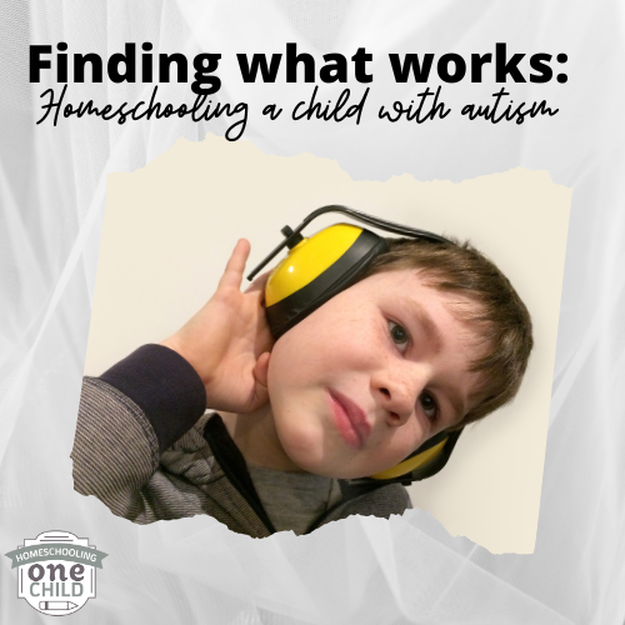



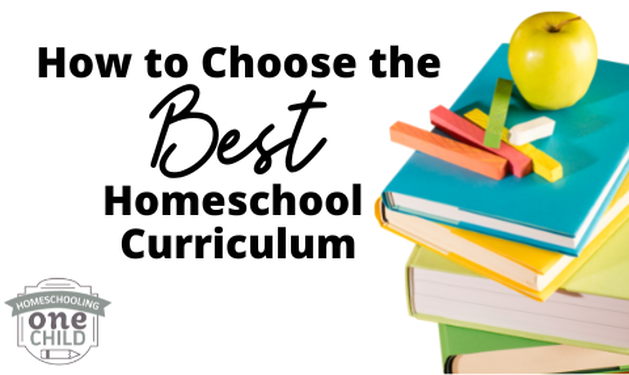

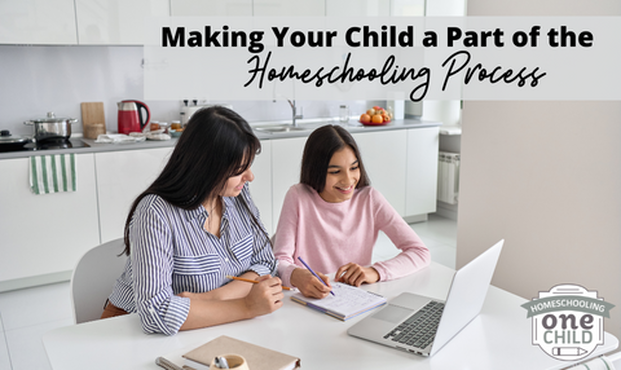
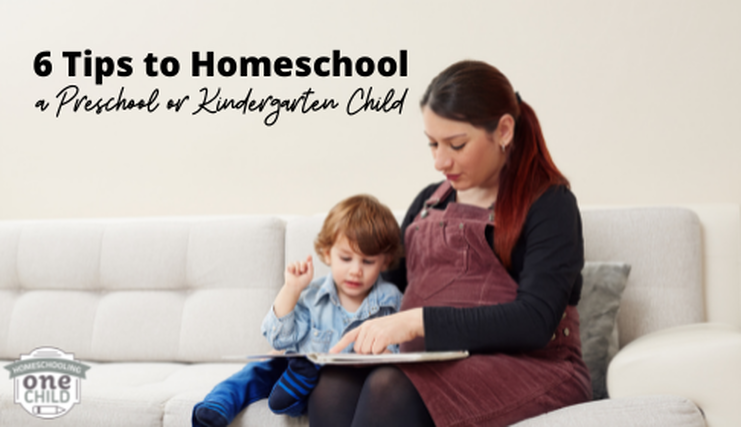


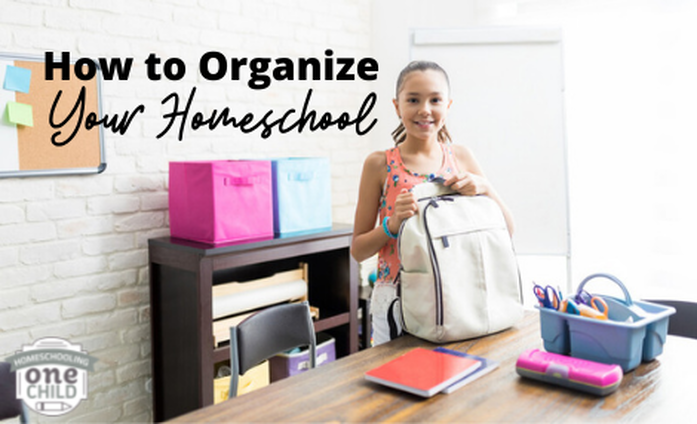
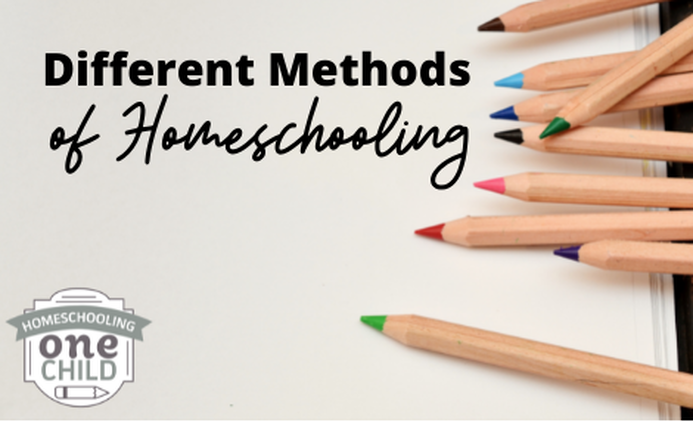
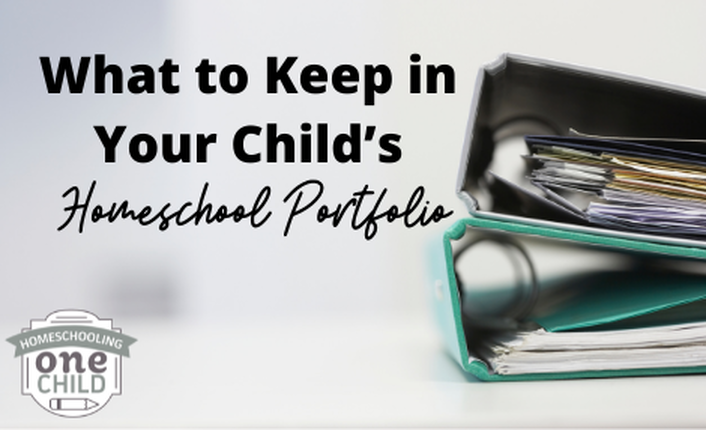
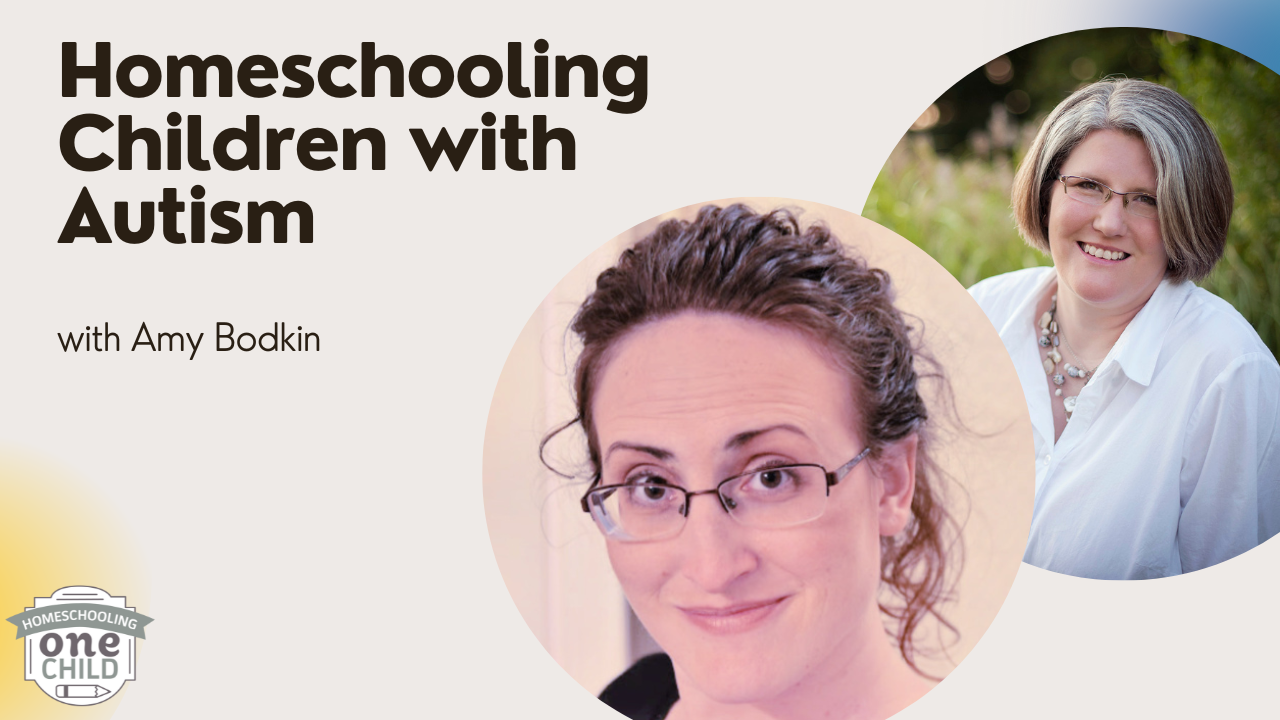
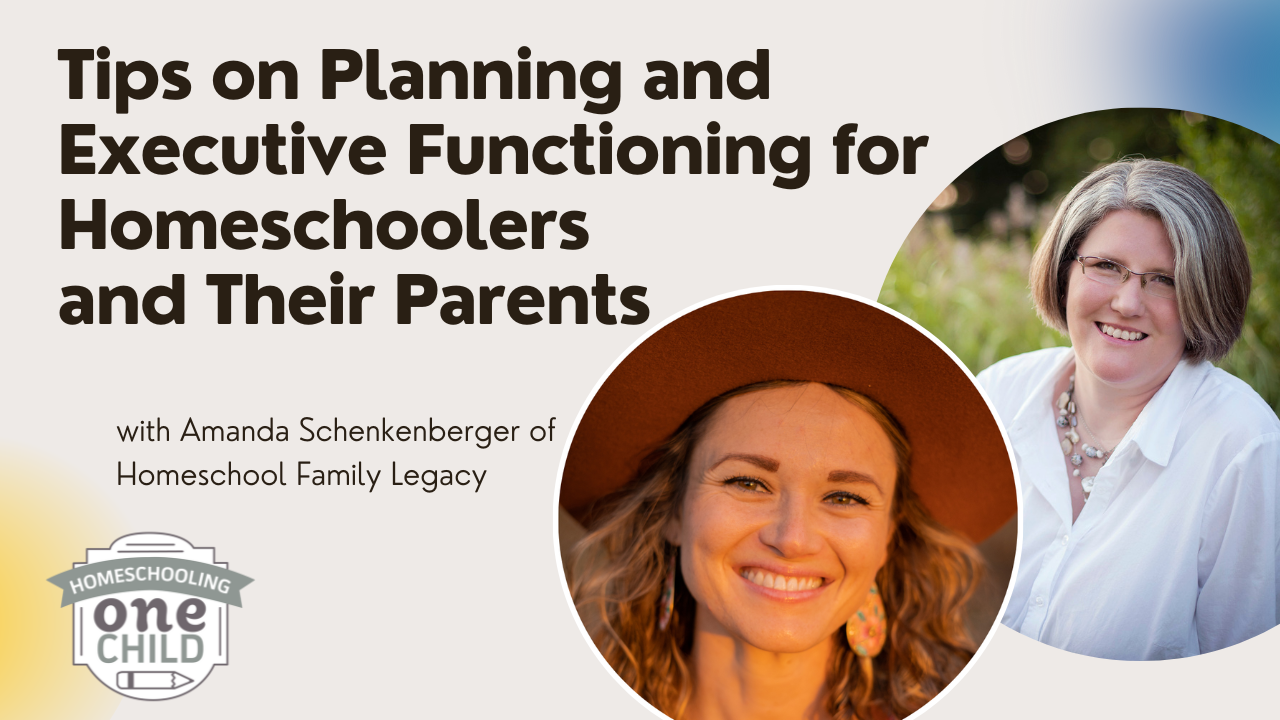

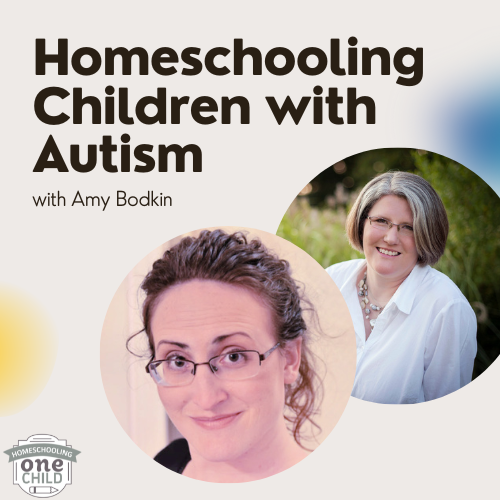
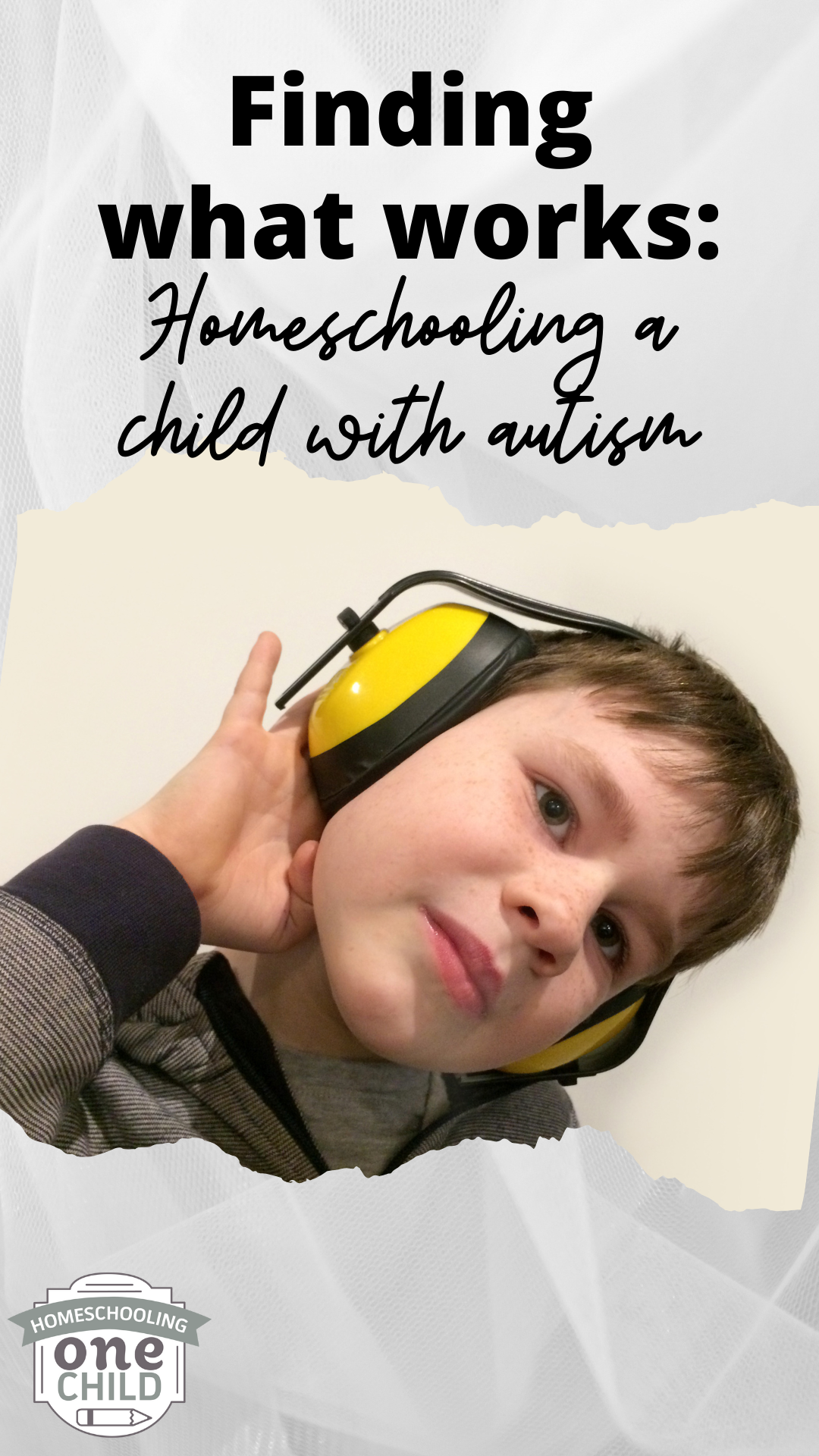
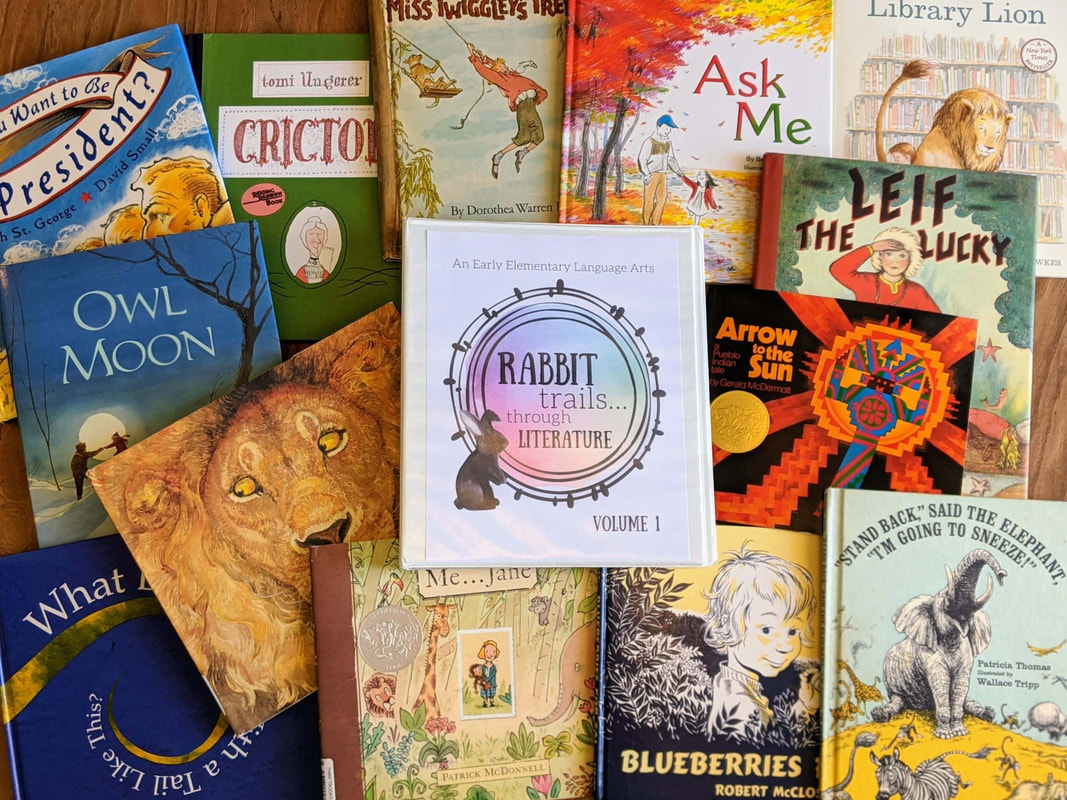
 RSS Feed
RSS Feed
